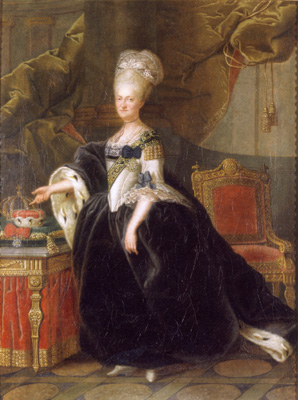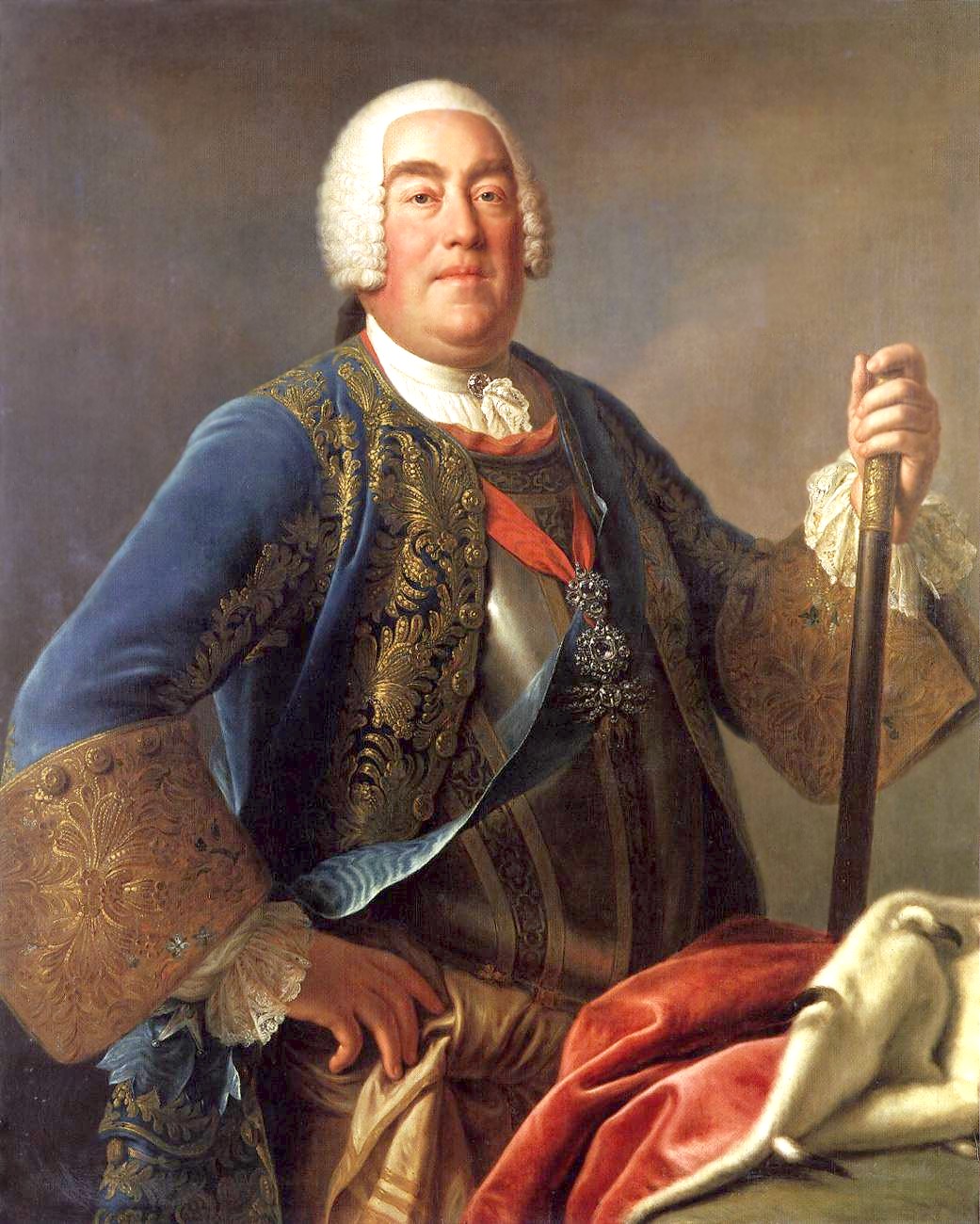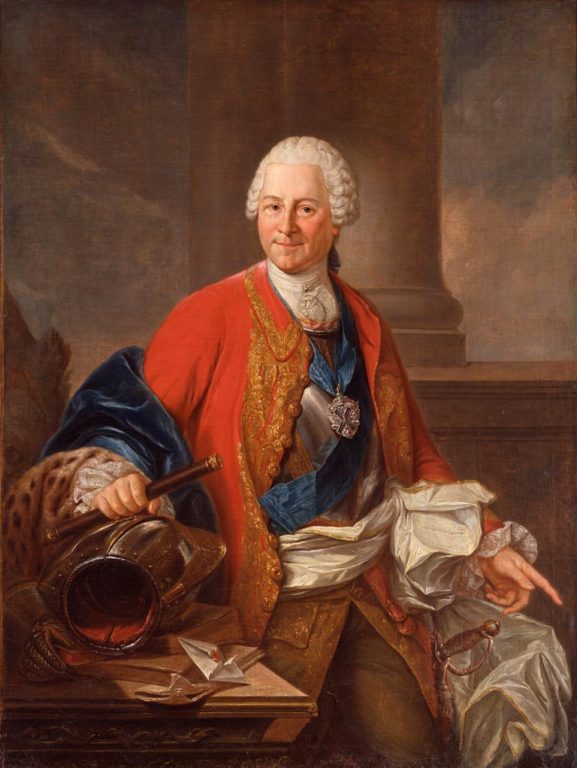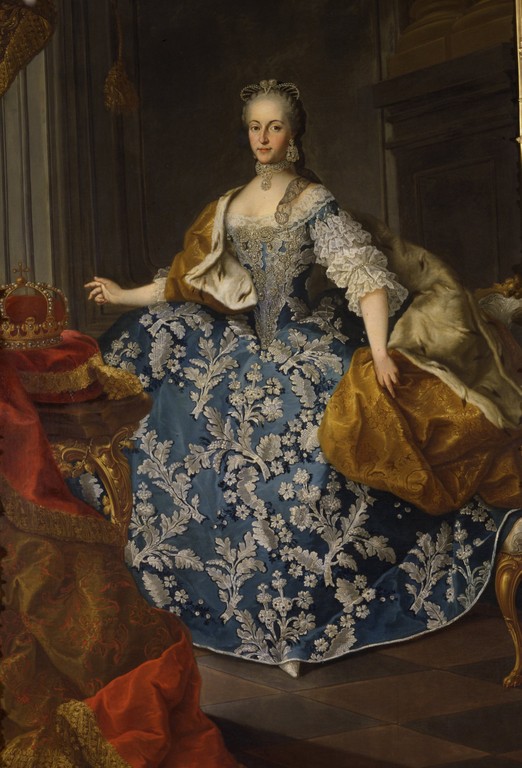|
Maria Kunigunde Of Saxony
Maria Kunigunde of Saxony (Maria Kunigunde Dorothea Hedwig Franziska Xaveria Florentina; 10 November 1740 in Warsaw – 8 April 1826 in Dresden) was Princess-Abbess of Essen and Thorn. She was a titular Princess of Poland, Lithuania and Saxony of the Albertine branch of the House of Wettin. She was a member of the Order of the Starry Cross and a collegiate lady in the abbey at Münsterbilzen. Life Youth She was the sixteenth and youngest child of King Augustus III of Poland (1696-1763), who was also Elector of Saxony as Frederick August II, and his wife Maria Josepha of Austria. Her father liked hunting, often went to the opera, kept an extensive art collection, and showed a great sense of family. However, he neglected his daily government duties and left them to his first ministers Count Heinrich von Brühl and Count Aleksander Józef Sułkowski. Her parents placed great emphasis on the education of all their children. Maria Kunigunde was taught Polish, Latin, French ... [...More Info...] [...Related Items...] OR: [Wikipedia] [Google] [Baidu] |
Pietro Rotari
Pietro Antonio Rotari (30 September 1707 – 31 August 1762) was an Italian painter of the Baroque period. Born in Verona, he led a peripatetic career, and died in Saint Petersburg, where he had traveled to paint for the Russian court. His portraits, mostly of women, are renowned for being beautiful and realistic. Rotari's works were generally limited to royal portraits held by notables such as emperors and court ladies. Biography He was initially a pupil of Antonio Balestra, but moved and lived in Venice from 1725 to 1727. He then joined the studio of Francesco Trevisani in Rome (1728–1732). Between 1731 and 1734, he worked with Francesco Solimena in Naples. He then returned then to Verona, where he started a studio. In 1750, he had moved to Vienna. In 1756, he was invited to Russia by the court of the Tsarina Elizabeth of Russia, Elizabetta Petrovna. From there he moved to Dresden and to work with the court of Augustus III of Poland. He returned to St Petersburg to work with ... [...More Info...] [...Related Items...] OR: [Wikipedia] [Google] [Baidu] |
Heinrich Von Brühl
Heinrich, count von Brühl ( pl, Henryk Brühl, 13 August 170028 October 1763), was a Polish-Saxon statesman at the court of Saxony and the Polish–Lithuanian Commonwealth and a member of the powerful German von Brühl family. The incumbency of this ambitious politician coincided with the decline of both states. Brühl was a skillful diplomat and cunning strategist, who managed to attain control over of Saxony and Poland, partly by controlling its king, Augustus III, who ultimately could only be accessed through Brühl himself. Polish historian and writer Józef Ignacy Kraszewski wrote a novel under the title ''Count Brühl'', in which he described Heinrich as an oppressive and stubborn dictator, who, with greed, but also great determination, unsuccessfully attempted to gain control of the entire nation. It is widely believed that Brühl had Europe's largest collection of watches and military vests; attributed to him was also a vast collection of ceremonial wigs, hats and the l ... [...More Info...] [...Related Items...] OR: [Wikipedia] [Google] [Baidu] |
Lower Rhenish-Westphalian Circle
Lower may refer to: *Lower (surname) *Lower Township, New Jersey *Lower Receiver (firearms) *Lower Wick Lower Wick is a small hamlet located in the county of Gloucestershire, England. It is situated about five miles south west of Dursley, eighteen miles southwest of Gloucester and fifteen miles northeast of Bristol. Lower Wick is within the civil ... Gloucestershire, England See also * Nizhny {{Disambiguation ... [...More Info...] [...Related Items...] OR: [Wikipedia] [Google] [Baidu] |
Maria Josepha Of Bavaria
Maria Josepha Antonia Walburga Felicitas Regula of Bavaria (20 March 173928 May 1767) was Holy Roman Empress, Queen of the Romans, Archduchess of Austria, Grand Duchess of Tuscany, among other titles, by her marriage to Joseph II, Holy Roman Emperor. By birth, she was a Princess and Duchess of Bavaria as the daughter of Charles VII, Holy Roman Emperor, Elector of Bavaria, and Archduchess Maria Amalia of Austria. Family A member of the House of Wittelsbach, she was born in Munich, Bavaria. Maria Josepha was the seventh and youngest child of Charles Albert, Elector of Bavaria, and Holy Roman Emperor. Her mother, Maria Amalia, was an Archduchess of Austria by birth. Her maternal grandparents were Joseph I, Holy Roman Emperor, and Wilhelmina Amalia of Brunswick-Lüneburg. Her paternal grandparents were Maximilian II Emanuel, Elector of Bavaria, and Theresa Kunegunda Sobieska, the daughter of the King of Polish–Lithuanian Commonwealth, John III Sobieski. Josepha's mother, Arc ... [...More Info...] [...Related Items...] OR: [Wikipedia] [Google] [Baidu] |
Teplice
Teplice () (until 1948 Teplice-Šanov; german: Teplitz-Schönau or ''Teplitz'') is a city in the Ústí nad Labem Region of the Czech Republic. It has about 49,000 inhabitants. It is the second largest Czech spa town, after Karlovy Vary. The historic city centre is well preserved and is protected by law as an urban monument zone. Administrative parts The municipal area comprises the administrative parts of Teplice proper, Hudcov, Nová Ves, Prosetice, Řetenice, Sobědruhy and Trnovany. Etymology The name ''Teplice'' is an Old Czech word, meaning "hot spring". Geography Teplice is located about west of Ústí nad Labem and northwest of Prague. The northern part of the municipal territory lies in the Most Basin, the southern part lies in the Central Bohemian Uplands. The highest point is the hill Doubravská hora with an elevation of . There are several small fish ponds in the territory. History According to the 1541 ''Annales Bohemorum'' by chronicler Wenceslaus Hajek, th ... [...More Info...] [...Related Items...] OR: [Wikipedia] [Google] [Baidu] |
Vienna
en, Viennese , iso_code = AT-9 , registration_plate = W , postal_code_type = Postal code , postal_code = , timezone = CET , utc_offset = +1 , timezone_DST = CEST , utc_offset_DST = +2 , blank_name = Vehicle registration , blank_info = W , blank1_name = GDP , blank1_info = € 96.5 billion (2020) , blank2_name = GDP per capita , blank2_info = € 50,400 (2020) , blank_name_sec1 = HDI (2019) , blank_info_sec1 = 0.947 · 1st of 9 , blank3_name = Seats in the Federal Council , blank3_info = , blank_name_sec2 = GeoTLD , blank_info_sec2 = .wien , website = , footnotes = , image_blank_emblem = Wien logo.svg , blank_emblem_size = Vienna ( ; german: Wien ; ba ... [...More Info...] [...Related Items...] OR: [Wikipedia] [Google] [Baidu] |
Charles III Of Spain
it, Carlo Sebastiano di Borbone e Farnese , house = Bourbon-Anjou , father = Philip V of Spain , mother = Elisabeth Farnese , birth_date = 20 January 1716 , birth_place = Royal Alcazar of Madrid, Spain , death_date = , death_place = Royal Palace of Madrid, Spain , place of burial= El Escorial , religion = Roman Catholicism , signature = Autograph Charles III of Spain.svg Charles III (born Charles Sebastian; es, Carlos Sebastián; 20 January 1716 – 14 December 1788) was King of Spain (1759–1788). He also was Duke of Parma and Piacenza, as Charles I (1731–1735); King of Naples, as Charles VII, and King of Sicily, as Charles V (1734–1759). He was the fifth son of Philip V of Spain, and the eldest son of Philip's second wife, Elisabeth Farnese. A proponent of enlightened absolutism and regalism, he succeeded to the Spanish throne on 10 August 1759, upon the death of his childless half-brother Ferdinand VI. In 1731, t ... [...More Info...] [...Related Items...] OR: [Wikipedia] [Google] [Baidu] |
Charles IV Of Spain
, house = Bourbon-Anjou , father = Charles III of Spain , mother =Maria Amalia of Saxony , birth_date =11 November 1748 , birth_place =Palace of Portici, Portici, Naples , death_date = , death_place =Palazzo Barberini, Rome, Papal States , burial_place =El Escorial , religion =Roman Catholic , signature =Charles IV of Spain signature.svg Charles IV (Carlos Antonio Pascual Francisco Javier Juan Nepomuceno José Januario Serafín Diego) 11 November 1748 – 20 January 1819) was King of Spain and ruler of the Spanish Empire from 1788 to 1808. The Spain inherited by Charles IV gave few indications of instability, but during his reign, Spain entered a series of disadvantageous alliances and his regime constantly sought cash to deal with the exigencies of war. He detested his son and heir Ferdinand, who led the unsuccessful El Escorial Conspiracy and later forced Charles's abdication after the Tumult of Aranjuez in Marc ... [...More Info...] [...Related Items...] OR: [Wikipedia] [Google] [Baidu] |
Maria Luisa Of Parma
Maria Luisa of Parma (Luisa Maria Teresa Anna; 9 December 1751 – 2 January 1819) was, by marriage to King Charles IV of Spain, Queen of Spain from 1788 to 1808 leading up to the Peninsular War. Her relationship with Manuel Godoy and influence over the King made her unpopular among the people and aristocrats. She was rivals with the Duchess of Alba and the Duchess of Osuna, attracting popular attention. The death of her daughter-in-law Princess Maria Antonia of Naples and Sicily, whom she disliked, was said to be the poisoning by the Queen. Life Early life She was the youngest daughter of Philip, Duke of Parma, the fourth son of Philip V of Spain, and Louise Élisabeth of France, the eldest daughter of King Louis XV. Born in Parma, she was christened Luisa María Teresa Ana after her maternal grandparents and her mother's favourite sister Anne Henriette of France, but is known to history by the short Spanish form of this name: María Luisa, while Luisa was the name she used i ... [...More Info...] [...Related Items...] OR: [Wikipedia] [Google] [Baidu] |
Maria Theresa
Maria Theresa Walburga Amalia Christina (german: Maria Theresia; 13 May 1717 – 29 November 1780) was ruler of the Habsburg dominions from 1740 until her death in 1780, and the only woman to hold the position ''suo jure'' (in her own right). She was the sovereign of Austria, Hungary, Croatia, Bohemia, Transylvania, Mantua, Milan, Lodomeria and Galicia, the Austrian Netherlands, and Parma. By marriage, she was Duchess of Lorraine, Grand Duchess of Tuscany and Holy Roman Empress. Maria Theresa started her 40-year reign when her father, Emperor Charles VI, died on 20 October 1740. Charles VI paved the way for her accession with the Pragmatic Sanction of 1713 and spent his entire reign securing it. He neglected the advice of Prince Eugene of Savoy, who believed that a strong military and a rich treasury were more important than mere signatures. Eventually, Charles VI left behind a weakened and impoverished state, particularly due to the War of the Polish Succession and the Rus ... [...More Info...] [...Related Items...] OR: [Wikipedia] [Google] [Baidu] |
Princess Isabella Of Parma
Isabella of Bourbon-Parma (, ; 31 December 1741 – 27 November 1763) was a princess of Parma and infanta of Spain from the House of Bourbon-Parma as the daughter of Philip, Duke of Parma. She became an archduchess of Austria and princess of Bohemia and Hungary in 1760 by her marriage to Archduke Joseph of Austria, the future Joseph II, Holy Roman Emperor. Although her husband loved her, she did not fully return his feelings and found more fulfillment in her (likely romantic, possibly sexual) relationship with her sister-in-law, Archduchess Maria Christina. The loss of her beloved mother, an arranged marriage in which she was unhappy, a court life that did not fit her, and a difficult birth followed closely by two miscarriages and another hard pregnancy all affected her mental health, leading to a depression. She died at the age of 21 from smallpox. Life Early life The ''Infanta'' ''Isabel María Luisa Antonieta Fernanda Josefa Javiera Dominica Juana'' of Spain was bor ... [...More Info...] [...Related Items...] OR: [Wikipedia] [Google] [Baidu] |
Joseph II, Holy Roman Emperor
Joseph II (German: Josef Benedikt Anton Michael Adam; English: ''Joseph Benedict Anthony Michael Adam''; 13 March 1741 – 20 February 1790) was Holy Roman Emperor from August 1765 and sole ruler of the Habsburg lands from November 29, 1780 until his death. He was the eldest son of Empress Maria Theresa and her husband, Emperor Francis I, and the brother of Marie Antoinette, Maria Carolina of Austria and Maria Amalia, Duchess of Parma. He was thus the first ruler in the Austrian dominions of the union of the Houses of Habsburg and Lorraine, styled Habsburg-Lorraine. Joseph was a proponent of enlightened absolutism; however, his commitment to secularizing, liberalizing and modernizing reforms resulted in significant opposition, which resulted in failure to fully implement his programs. Meanwhile, despite making some territorial gains, his reckless foreign policy badly isolated Austria. He has been ranked with Catherine the Great of Russia and Frederick the Great of Prussia ... [...More Info...] [...Related Items...] OR: [Wikipedia] [Google] [Baidu] |




_Kašna_se_sochou_Madony_(Teplice)_3.jpg)





